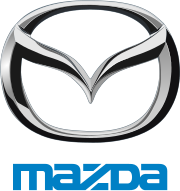Toyota HiAce
The Toyota HiAce is a motor vehicle produced by the Japanese manufacturer Toyota. First launched in 1967, the HiAce has since been available in a wide range of configurations, including minivan (MPV) and minibus, van, pick-up, taxi, and ambulance. In Japan the HiAce is exclusive to Toyo pet Store locations.
The fourth generation model appeared in mid 1989 and was available in standard wheelbase and long wheelbase variants; aGrand Cabin; standard wheelbase and long wheelbase van; long wheelbase and super long wheelbase high roof van. The latter shares a body design with the Commuter, which is a 15 seat minibus.
A range of engines were available in the 4th generation vehicles, ranging from 2.0-litre petrol engines to 3.0-litre turbo diesel engines. Most versions are rear-wheel drive, but part time or full time four-wheel drive versions were sold depending on specification level and market. The base model is typically the DX. Upmarket versions included CD, GL, and super GL models.
The facelifted fourth-generation HiAce was launched in May 1994. It was facelifted again during 1997 and once more in 2002.
In the Philippines, the HiAce was first sold in 1995 with a diesel engine, getting revamped in 1997 as it went from business status to family van status. In 1999, the HiAce Grandia and 2.0 GL gasoline HiAce variants were launched, as well as the HiAce Commuter, a HiAce meant for business, and the HiAce was facelifted again in that year. In early 2001, the top-of-the-line 3.0inline-4 diesel HiAce Super Grandia was launched. All came with a standard 5-speed manual transmission. These variants were all sold until early 2005, with the next generation being launched in June of that same year. A special edition HiAce Super Grandia J Japan edition was also sold together with the RAV4 J and Revo J from 2002–2003.
The HiAce rebadged with a luxury orientation, the Toyota RegiusAce, was introduced August 1999 with different versions called the Regius HiAce and Regius Touring HiAce sold at Toyopet and Vista dealerships. The RegiusAce uses a cab over setup, meaning that front seat passengers sit on top of the front axle and the 1TR-FE engine is located underneath the floor and between the front passengers.
When the Vista sales network was replaced by the NETZ sales network, the Regius Ace was sold exclusively at the Netz Store. The first generation H100 series was manufactured between 1999–2004.
Sold in the Japanese market between 1995 and 2002, the Granvia is a semi-bonneted van, with the front wheels positioned in front of the front seats for better safety. Available with seven- and eight-seater configurations and in two-wheel drive or four-wheel drive, it is based on the regular HiAce. Because of tighter safety regulations, this model replaced the mid-engined HiAce in Europe and several other markets. The diesel engines for Granvia are either a 2.4 L or 3.0 L diesel, or 2.7- and 3.4 L petrol. The Granvia spawned into the HiAce Regius, the Grand HiAce and the Touring HiAce. The Granvia, Grand HiAce, and Touring HiAce are upmarket passenger vans only.
In Europe, the Granvia-based HiAce sold from 1995 was usually equipped with the 2494 cc 2KDdiesel engine in a variety of versions, with or without turbocharging. The HiAce underwent a facelift in 2006, with bigger "jewel-style" headlights, and continued to be built in this form until 2012, replaced by the Toyota ProAce.
The fifth-generation HiAce appeared in 2005 as a wide long-wheelbase wagon, wide super-long-wheelbase high-roof "Grand Cabin", long-wheelbase van, long-wheelbase high-roof van and a wide super-long-wheelbase high-roof van. In this generation the gear lever has been moved to the dashboard to enable easier movement in the cabin. Five-speed manual and four-speed automatic transmissions are available.
All of the models use a four-cylinder DOHC engine, in a variety of forms, a 1TR-FE 2,000 cc or 2TR-FE 2,700 cc petrol engine, or a 2KD-FTV 2,500 cc or 1KD-FTV 3,000 cc D-4D turbo diesel engine. Two of these engines are available in Malaysia, the 2.5 L turbo diesel, offered in a choice of panel van or window van; and the 2.7 L petrol, that comes only in the window van option.
Currently, the Hiace brand is assembled all over the globe, including Philippines, Japan, South Africa, Thailand, Pakistan, Malaysia and Vietnam. Pretty impressive, right? Another amazing thing about the Hiace brand is that it’s got a very high resale value. Just take some time and lurke around the first van-fan forum that pops up – you’ll see that Toyota’s van is very popular among car enthusiasts, even the very first generations.
In terms of safety, the new Hiace is a role model. Actually, it has always been one of the safest vans in the market. Toyota just recently introduced a lot of the latest safety equipment in the 2015 editions, and the official statement claims that all of that technological heaven will also be integrated in the 2016 model, including Vehicle Stability Control, Reversing Camera, Electrochromatic Mirror, Emergency Stop Signal, an Anti-skid Braking System (helps you hold control in an emergency event by not letting the van’s wheels lock up), as well as some new developments that are kept in secret for now.






























